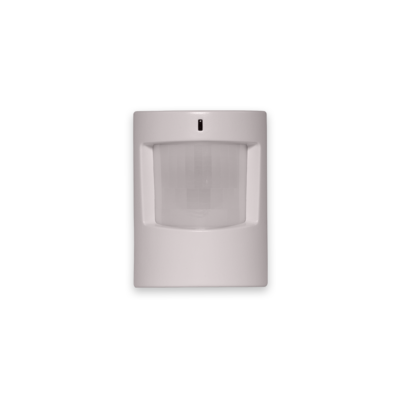Prevent Pets from Triggering Unwanted False Alarms
Motion sensors and the alerts they send when there might be an intruder inside (or outside) the home are an essential component of home security. If an unwanted person enters your home and plans to rob you or cause physical harm, you’re going to want to know before that person finds you. The ensuing alarm might scare the person off, or it might give you time to contact law enforcement and take steps to protect yourself, your family, and your property.

While security motion alarms are great when there’s an actual intruder in the house, they’re not so great when you have pets setting them off at all hours of the day and night. Puppies and cats are especially notorious for this because puppies run and bound a lot and because cats like to climb and jump up on things. Many sensors are placed so that they will detect movement around the height of a human torso, which mostly rules out dogs tripping them, but with cats, you’re still likely to have them trip the sensors.
However, it is that you get notifications about sensors detecting movement (nowadays, many people have alerts sent to their phones or other devices), it gets pretty annoying after awhile with a pet often causing false alarms. As a result, you’ll be tempted to just give up and turn off the sensors or turn off notifications. That will provide relief, but now you’ve just reduced the security levels in your home.
It’s enough to make you wonder if you should even bother with motion sensors when you have pets. The answer to that is yes, pets and motion sensors can coexist, but you’ll need the right equipment installed and working correctly.
So let’s look at some ways of preventing cats and other pets from setting off your motion sensors.
Train Them
Okay, you can stop laughing! While you actually might be able to train a dog to stay out of areas where they’re more likely to trip sensors, good luck with training a cat not to jump up on and climb on things. Anyone who’s lived with cats knows that getting them to do what you want them to do is about as easy as performing the mythical 12 Labors of Hercules. Actually, it might be harder; you can at least try to do what Hercules did, but you probably won’t convince your cat to bother trying to learn anything. Most likely, it will just stare at you indifferently or walk away.
Try the Upside-Down Trick
Some people have had success with this:
- First, place the sensor somewhere that’s out of reach of pets. 4-5 feet up a wall should do the trick.
- Then, turn the sensors upside down.
- A cat might still trip the sensors here and there, but people who have had good results with this method report that it’s highly effective.
As security experts, we’re a little leery of installing equipment in any way other than its intended way, so we recommend one of the approaches coming up, but if you want to try this and it works for you, good on you.
Reduce the Number of Sensors to What’s Essential
For most people, there’s no need to have motion sensors all over the home. Instead, you can designate critical security zones such as likely entry points or places where sensitive or valuable items are stored. This way, you’ll have additional protection for such high-import locations plus fewer opportunities for pets to trip those sensors. In addition, having fewer sensors might make it easier to keep pets away from the places where the sensors are.
Adjust and Mount Strategically
If you prefer to have sensors in more areas than just the most critical ones, you can still mount them in places where they aren’t likely to be tripped when, say, a cat leaps up onto a counter. With an adjustable sensor, you can also set it so that it will still pick up human movement while not catching most pet movement.
There are also specialized sensors that react to sounds like glass breaking instead of motion. And if you’re away from home, you can have cameras send live footage to a phone or other device so that when you get an alert, you can possibly check to see if it was a furry friend, not a human intruder, behind it.
Pet-Friendly Infrared Motion Sensors

An excellent option is going with IR motion sensors. These detect body heat, not movement, and many are designed or can be programmed not to go off over body signatures created by lighter living objects. Typically, that weight threshold is around 40 pounds. For large and some medium-sized dogs, this won’t be effective, but it will be for cats and smaller dogs.
Go with a Trusted Security Professional

When it comes to security, every home is different and has different security needs. At True Home Security, we know how important it is for you and your loved ones to be safe and secure in your home and for your home to be secure even when you’re not there. With decades of combined industry experience, our team sets out to do exactly that and dedicates itself 100% to your safety and satisfaction.
True provide security systems, surveillance systems, alarm monitoring, and smart home automation systems as your needs require. Let’s schedule an appointment today to see how we can secure and protect you, your family, and your home.
